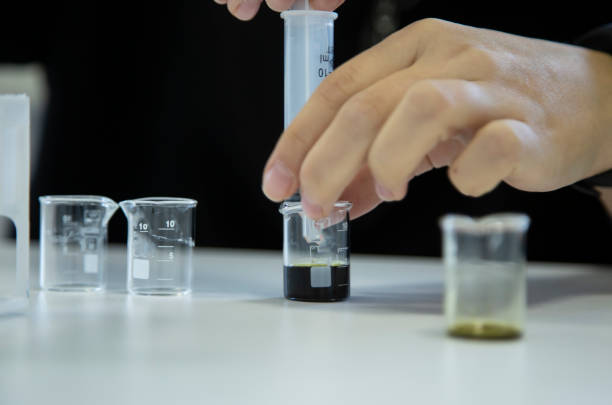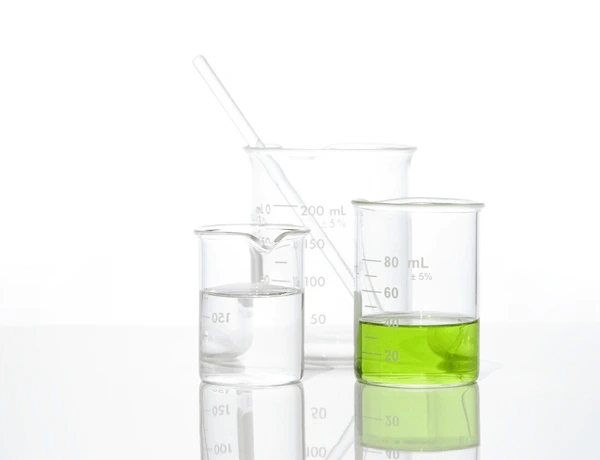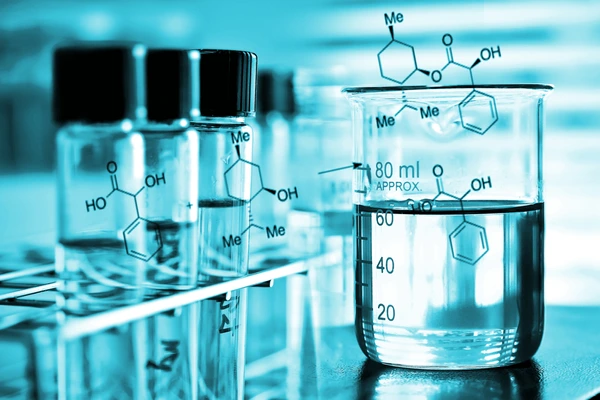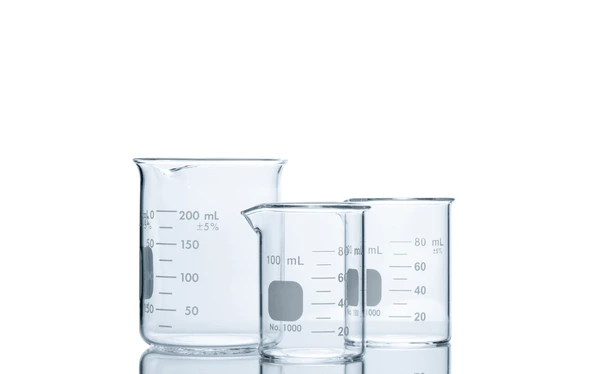In the world of science and laboratory research, accurate measurement, mixing, and handling of liquids are fundamental to every experiment. One of the most recognizable and widely used tools that facilitates these processes is the beaker. Simple in design yet indispensable in function, beakers are a cornerstone of laboratory glassware, found in chemistry labs, biology labs, medical research, and educational institutions worldwide.
This comprehensive guide explores everything you need to know about beakers, including their structure, types, uses, advantages, and proper handling.
Introduction to Beaker
A beaker is a simple cylindrical container with a flat bottom and a wide opening, typically used in laboratories for stirring, mixing, heating, and pouring liquids. Beakers often feature a small spout or “beak” for easy pouring, which is where they get their name.
Beakers are available in various sizes and materials, making them suitable for a wide range of scientific applications.
Structure and Design of a Beaker
The design of the beaker emphasizes practicality, versatility, and durability:
- Cylindrical Shape: Provides stability and maximizes the internal volume.
- Flat Bottom: Ensures the beaker can sit firmly on laboratory surfaces or heating equipment.
- Wide Mouth: Allows easy access for pouring, stirring, or inserting instruments.
- Graduation Marks: Many beakers feature volume graduations, though these are approximate and not intended for precision measurement.
- Pouring Spout: The small spout facilitates controlled pouring of liquids without spilling.
Beakers are most commonly made from borosilicate glass, known for its excellent thermal resistance. Plastic beakers made from materials such as polypropylene or polymethylpentene are also available for specific laboratory environments.
Types of Beakers

Beakers come in different shapes and materials to suit various laboratory requirements:
1. Standard (Low Form) Beaker
- Also known as a Griffin beaker.
- Features a low, wide profile.
- Ideal for general mixing, heating, and handling of liquids.
2. Tall Form Beaker
- Taller and narrower than standard beakers.
- Often referred to as Berzelius’ beaker.
- Used for more precise volume control and mixing.
3. Plastic Beaker
- Made from durable plastics like polypropylene.
- Ideal for educational labs, fieldwork, or situations where glass breakage is a concern.
4. Heavy-Duty Beaker
- Thicker walls for enhanced durability.
- Suitable for use under extreme conditions or with aggressive chemicals.
Common Sizes of Beakers

Beakers come in various sizes to suit different volume requirements.
- 50 mL
- 100 mL
- 250 mL
- 500 mL
- 1000 mL (1 liter)
- 2000 mL (2 liters)
- 5000 mL (5 liters)
The size of the beaker chosen depends on the specific volume requirements of the experiment or procedure.
Uses of Beakers in Laboratories
The beaker is one of the most versatile laboratory tools with numerous applications:
1. Mixing and Stirring Solutions
- Beakers are ideal for mixing chemicals or solutions.
- Their broad opening facilitates easy stirring using glass rods or magnetic stirrers.
2. Heating Liquids
- Borosilicate glass beakers can be safely heated on hot plates, over Bunsen burners, or in water baths.
- Their flat base ensures stable heating.
3. Measuring Approximate Volumes
- Graduation marks allow for a rough estimation of liquid volumes.
- For precise measurements, more accurate tools like graduated cylinders are recommended.
4. Transferring and Pouring Liquids
- The spout enables easy and controlled pouring of liquids into other containers.
5. Holding Samples for Observation
- Beakers are often used to hold liquids or specimens during observation or testing procedures.
Advantages of Using a Beaker
Beakers offer several benefits that make them a laboratory essential:
- Versatility: Ideal for various tasks such as mixing, heating, and containing liquids.
- Ease of Use: Simple, user-friendly design for quick setup and handling.
- Durability: Borosilicate glass versions resist thermal shock and chemical corrosion.
- Cost-Effective: Affordable and widely available in most laboratory supply stores.
Limitations of the Beaker

While highly useful, beakers have some limitations:
- Graduation marks are approximate and not suitable for precise volume measurements.
- Glass beakers can break if dropped or exposed to extreme thermal shock.
- Plastic beakers may not withstand high temperatures or aggressive chemicals.
Proper Handling and Care for a Beaker
To ensure the longevity and safety of beakers, follow these best practices:
- Inspection: Always check for cracks, chips, or damage before use.
- Cleaning: Wash thoroughly with laboratory-grade detergents and rinse with distilled water.
- Heating Caution: Avoid direct flame contact with glass beakers unless they are designed for such use. Gradual heating is recommended.
- Storage: Store beakers neatly on shelves or in cabinets to prevent accidental breakage.
- Labeling: Clearly label beakers if they contain chemicals or biological samples.
Beaker in Educational and Professional Laboratories
Beakers are widely used across various laboratory settings:
- Educational Institutions: A standard tool for teaching basic chemistry, biology, and physics experiments.
- Research Laboratories: Used in advanced scientific research for mixing, heating, and sample preparation.
- Medical and Pharmaceutical Labs: Employed for preparing solutions, reagents, and performing various tests.
- Industrial Laboratories: Essential for product development, quality control, and testing processes.
Beaker vs Other Laboratory Glassware
While beakers are versatile, they differ from other lab containers in terms of precision and use:
| Glassware Type | Primary Use | Precision | Unique Feature |
|---|---|---|---|
| Beaker | Mixing, heating, and rough measuring | Low | Wide mouth, easy pouring |
| Graduated Cylinder | Accurate volume measurement | High | Tall, narrow, precise graduations |
| Conical Flask | Mixing by swirling, titration | Moderate | Tapered shape, narrow neck |
| Volumetric Flask | Precise preparation of standard solutions | Very High | Single calibration mark for exact volume |
Conclusion
The beaker remains one of the most essential pieces of laboratory glassware, valued for its versatility, simplicity, and wide range of applications. Whether in educational labs or advanced research facilities, beakers play a critical role in enabling scientific exploration, experimentation, and innovation.
With proper handling, maintenance, and an understanding of their capabilities and limitations, beakers continue to be an indispensable tool for scientists, educators, and laboratory professionals worldwide.
What is the beaker used for?
In the world of science and laboratory research, accurate measurement, mixing, and handling of liquids are fundamental to every experiment. One of the most recognizable and widely used tools that facilitates these processes is the beaker. Simple in design yet indispensable in function, beakers are a cornerstone of laboratory glassware, found in chemistry labs, biology labs, medical research, and educational institutions worldwide.
This comprehensive guide explores everything you need to know about beakers, including their structure, types, uses, advantages, and proper handling.
Introduction to Beaker
A beaker is a simple cylindrical container with a flat bottom and a wide opening, typically used in laboratories for stirring, mixing, heating, and pouring liquids. Beakers often feature a small spout or “beak” for easy pouring, which is where they get their name.
Beakers are available in various sizes and materials, making them suitable for a wide range of scientific applications.
Structure and Design of a Beaker
The design of the beaker emphasizes practicality, versatility, and durability:
Cylindrical Shape: Provides stability and maximizes the internal volume.
Flat Bottom: Ensures the beaker can sit firmly on laboratory surfaces or heating equipment.
Wide Mouth: Allows easy access for pouring, stirring, or inserting instruments.
Graduation Marks: Many beakers feature volume graduations, though these are approximate and not intended for precision measurement.
Pouring Spout: The small spout facilitates controlled pouring of liquids without spilling.
Beakers are most commonly made from borosilicate glass, known for its excellent thermal resistance. Plastic beakers made from materials such as polypropylene or polymethylpentene are also available for specific laboratory environments.
Types of Beakers
Beakers come in different shapes and materials to suit various laboratory requirements:
1. Standard (Low Form) Beaker
Also known as a Griffin beaker.
Features a low, wide profile.
Ideal for general mixing, heating, and handling of liquids.
2. Tall Form Beaker
Taller and narrower than standard beakers.
Often referred to as Berzelius’ beaker.
Used for more precise volume control and mixing.
3. Plastic Beaker
Made from durable plastics like polypropylene.
Ideal for educational labs, fieldwork, or situations where glass breakage is a concern.
4. Heavy-Duty Beaker
Thicker walls for enhanced durability.
Suitable for use under extreme conditions or with aggressive chemicals.
Common Sizes of Beaker
Beakers come in various sizes to suit different volume requirements.
50 mL
100 mL
250 mL
500 mL
1000 mL (1 liter)
2000 mL (2 liters)
5000 mL (5 liters)
The size of the beaker chosen depends on the specific volume requirements of the experiment or procedure.
Uses of Beakers in Laboratories
The beaker is one of the most versatile laboratory tools with numerous applications:
1. Mixing and Stirring Solutions
Beakers are ideal for mixing chemicals or solutions.
Their broad opening facilitates easy stirring using glass rods or magnetic stirrers.
2. Heating Liquids
Borosilicate glass beakers can be safely heated on hot plates, over Bunsen burners, or in water baths.
Their flat base ensures stable heating.
3. Measuring Approximate Volumes
Graduation marks allow for a rough estimation of liquid volumes.
For precise measurements, more accurate tools like graduated cylinders are recommended.
4. Transferring and Pouring Liquids
The spout enables easy and controlled pouring of liquids into other containers.
5. Holding Samples for Observation
Beakers are often used to hold liquids or specimens during observation or testing procedures.
Advantages of Using a Beaker
Beakers offer several benefits that make them a laboratory essential:
Versatility: Ideal for various tasks such as mixing, heating, and containing liquids.
Ease of Use: Simple, user-friendly design for quick setup and handling.
Durability: Borosilicate glass versions resist thermal shock and chemical corrosion.
Cost-Effective: Affordable and widely available in most laboratory supply stores.
Limitations of the Beaker
While highly useful, beakers have some limitations:
Graduation marks are approximate and not suitable for precise volume measurements.
Glass beakers can break if dropped or exposed to extreme thermal shock.
Plastic beakers may not withstand high temperatures or aggressive chemicals.
Proper Handling and Care for a Beaker
To ensure the longevity and safety of beakers, follow these best practices:
Inspection: Always check for cracks, chips, or damage before use.
Cleaning: Wash thoroughly with laboratory-grade detergents and rinse with distilled water.
Heating Caution: Avoid direct flame contact with glass beakers unless they are designed for such use. Gradual heating is recommended.
Storage: Store beakers neatly on shelves or in cabinets to prevent accidental breakage.
Labeling: Clearly label beakers if they contain chemicals or biological samples.
Beaker in Educational and Professional Laboratories
Beakers are widely used across various laboratory settings:
Educational Institutions: A standard tool for teaching basic chemistry, biology, and physics experiments.
Research Laboratories: Used in advanced scientific research for mixing, heating, and sample preparation.
Medical and Pharmaceutical Labs: Employed for preparing solutions, reagents, and performing various tests.
Industrial Laboratories: Essential for product development, quality control, and testing processes.
Beaker vs Other Laboratory Glassware
While beakers are versatile, they differ from other lab containers in terms of precision and use:
| Glassware Type | Primary Use | Precision | Unique Feature |
|---|---|---|---|
| Beaker | Mixing, heating, and rough measuring | Low | Wide mouth, easy pouring |
| Graduated Cylinder | Accurate volume measurement | High | Tall, narrow, precise graduations |
| Conical Flask | Mixing by swirling, titration | Moderate | Tapered shape, narrow neck |
| Volumetric Flask | Precise preparation of standard solutions | Very High | Single calibration mark for exact volume |
Conclusion
The beaker remains one of the most essential pieces of laboratory glassware, valued for its versatility, simplicity, and wide range of applications. Whether in educational labs or advanced research facilities, beakers play a critical role in enabling scientific exploration, experimentation, and innovation.
With proper handling, maintenance, and an understanding of their capabilities and limitations, beakers continue to be an indispensable tool for scientists, educators, and laboratory professionals worldwide.
What is the function of a glass beaker?
In the world of science and laboratory research, accurate measurement, mixing, and handling of liquids are fundamental to every experiment. One of the most recognizable and widely used tools that facilitates these processes is the beaker. Simple in design yet indispensable in function, beakers are a cornerstone of laboratory glassware, found in chemistry labs, biology labs, medical research, and educational institutions worldwide.
This comprehensive guide explores everything you need to know about beakers, including their structure, types, uses, advantages, and proper handling.
Introduction to Beaker
A beaker is a simple cylindrical container with a flat bottom and a wide opening, typically used in laboratories for stirring, mixing, heating, and pouring liquids. Beaker often feature a small spout or “beak” for easy pouring, which is where they get their name.
Beakers are available in various sizes and materials, making them suitable for a wide range of scientific applications.
Structure and Design of a Beaker
The design of the beaker emphasizes practicality, versatility, and durability:
Cylindrical Shape: Provides stability and maximizes the internal volume.
Flat Bottom: Ensures the beaker can sit firmly on laboratory surfaces or heating equipment.
Wide Mouth: Allows easy access for pouring, stirring, or inserting instruments.
Graduation Marks: Many beaker feature volume graduations, though these are approximate and not intended for precision measurement.
Pouring Spout: The small spout facilitates controlled pouring of liquids without spilling.
Beaker are most commonly made from borosilicate glass, known for its excellent thermal resistance. Plastic beaker made from materials such as polypropylene or polymethylpentene are also available for specific laboratory environments.
Types of Beakers
Beakers come in different shapes and materials to suit various laboratory requirements:
1. Standard (Low Form) Beaker
Also known as a Griffin beaker.
Features a low, wide profile.
Ideal for general mixing, heating, and handling of liquids.
2. Tall Form Beaker
Taller and narrower than standard beakers.
Often referred to as Berzelius’ beaker.
Used for more precise volume control and mixing.
3. Plastic Beaker
Made from durable plastics like polypropylene.
Ideal for educational labs, fieldwork, or situations where glass breakage is a concern.
4. Heavy-Duty Beaker
Thicker walls for enhanced durability.
Suitable for use under extreme conditions or with aggressive chemicals.
Common Sizes of Beaker
Beaker come in various sizes to suit different volume requirements.
50 mL
100 mL
250 mL
500 mL
1000 mL (1 liter)
2000 mL (2 liters)
5000 mL (5 liters)
The size of the beaker chosen depends on the specific volume requirements of the experiment or procedure.
Uses of Beakers in Laboratories
The beaker is one of the most versatile laboratory tools with numerous applications:
1. Mixing and Stirring Solutions
Beakers are ideal for mixing chemicals or solutions.
Their broad opening facilitates easy stirring using glass rods or magnetic stirrers.
2. Heating Liquids
Borosilicate glass beakers can be safely heated on hot plates, over Bunsen burners, or in water baths.
Their flat base ensures stable heating.
3. Measuring Approximate Volumes
Graduation marks allow for a rough estimation of liquid volumes.
For precise measurements, more accurate tools like graduated cylinders are recommended.
4. Transferring and Pouring Liquids
The spout enables easy and controlled pouring of liquids into other containers.
5. Holding Samples for Observation
Beaker are often used to hold liquids or specimens during observation or testing procedures.
Advantages of Using a Beaker
Beaker offer several benefits that make them a laboratory essential:
Versatility: Ideal for various tasks such as mixing, heating, and containing liquids.
Ease of Use: Simple, user-friendly design for quick setup and handling.
Durability: Borosilicate glass versions resist thermal shock and chemical corrosion.
Cost-Effective: Affordable and widely available in most laboratory supply stores.
Limitations of the Beaker
While highly useful, beakers have some limitations:
Graduation marks are approximate and not suitable for precise volume measurements.
Glass beakers can break if dropped or exposed to extreme thermal shock.
Plastic beakers may not withstand high temperatures or aggressive chemicals.
Proper Handling and Care for a Beaker
To ensure the longevity and safety of beakers, follow these best practices:
Inspection: Always check for cracks, chips, or damage before use.
Cleaning: Wash thoroughly with laboratory-grade detergents and rinse with distilled water.
Heating Caution: Avoid direct flame contact with glass beakers unless they are designed for such use. Gradual heating is recommended.
Storage: Store beaker neatly on shelves or in cabinets to prevent accidental breakage.
Labeling: Clearly label beakers if they contain chemicals or biological samples.
Beaker in Educational and Professional Laboratories
Beaker are widely used across various laboratory settings:
Educational Institutions: A standard tool for teaching basic chemistry, biology, and physics experiments.
Research Laboratories: Used in advanced scientific research for mixing, heating, and sample preparation.
Medical and Pharmaceutical Labs: Employed for preparing solutions, reagents, and performing various tests.
Industrial Laboratories: Essential for product development, quality control, and testing processes.
Beaker vs Other Laboratory Glassware
While beaker are versatile, they differ from other lab containers in terms of precision and use:
| Glassware Type | Primary Use | Precision | Unique Feature |
|---|---|---|---|
| Beaker | Mixing, heating, and rough measuring | Low | Wide mouth, easy pouring |
| Graduated Cylinder | Accurate volume measurement | High | Tall, narrow, precise graduations |
| Conical Flask | Mixing by swirling, titration | Moderate | Tapered shape, narrow neck |
| Volumetric Flask | Precise preparation of standard solutions | Very High | Single calibration mark for exact volume |
Conclusion
The beaker remains one of the most essential pieces of laboratory glassware, valued for its versatility, simplicity, and wide range of applications. Whether in educational labs or advanced research facilities, beaker play a critical role in enabling scientific exploration, experimentation, and innovation.
With proper handling, maintenance, and an understanding of their capabilities and limitations, beakers continue to be an indispensable tool for scientists, educators, and laboratory professionals worldwide.
What are the advantages of a Beaker?
Beaker offer several benefits that make them a laboratory essential:
Versatility: Ideal for various tasks such as mixing, heating, and containing liquids.
Ease of Use: Simple, user-friendly design for quick setup and handling.
Durability: Borosilicate glass versions resist thermal shock and chemical corrosion.
Cost-Effective: Affordable and widely available in most laboratory supply stores.
How to use a beaker in a lab?
The beaker is one of the most versatile laboratory tools with numerous applications:
1. Mixing and Stirring Solutions
Beaker are ideal for mixing chemicals or solutions.
Their broad opening facilitates easy stirring using glass rods or magnetic stirrers.
2. Heating Liquids
Borosilicate glass beaker can be safely heated on hot plates, over Bunsen burners, or in water baths.
Their flat base ensures stable heating.
3. Measuring Approximate Volumes
Graduation marks allow for a rough estimation of liquid volumes.
For precise measurements, more accurate tools like graduated cylinders are recommended.
4. Transferring and Pouring Liquids
The spout enables easy and controlled pouring of liquids into other containers.
5. Holding Samples for Observation
Beaker are often used to hold liquids or specimens during observation or testing procedures.
